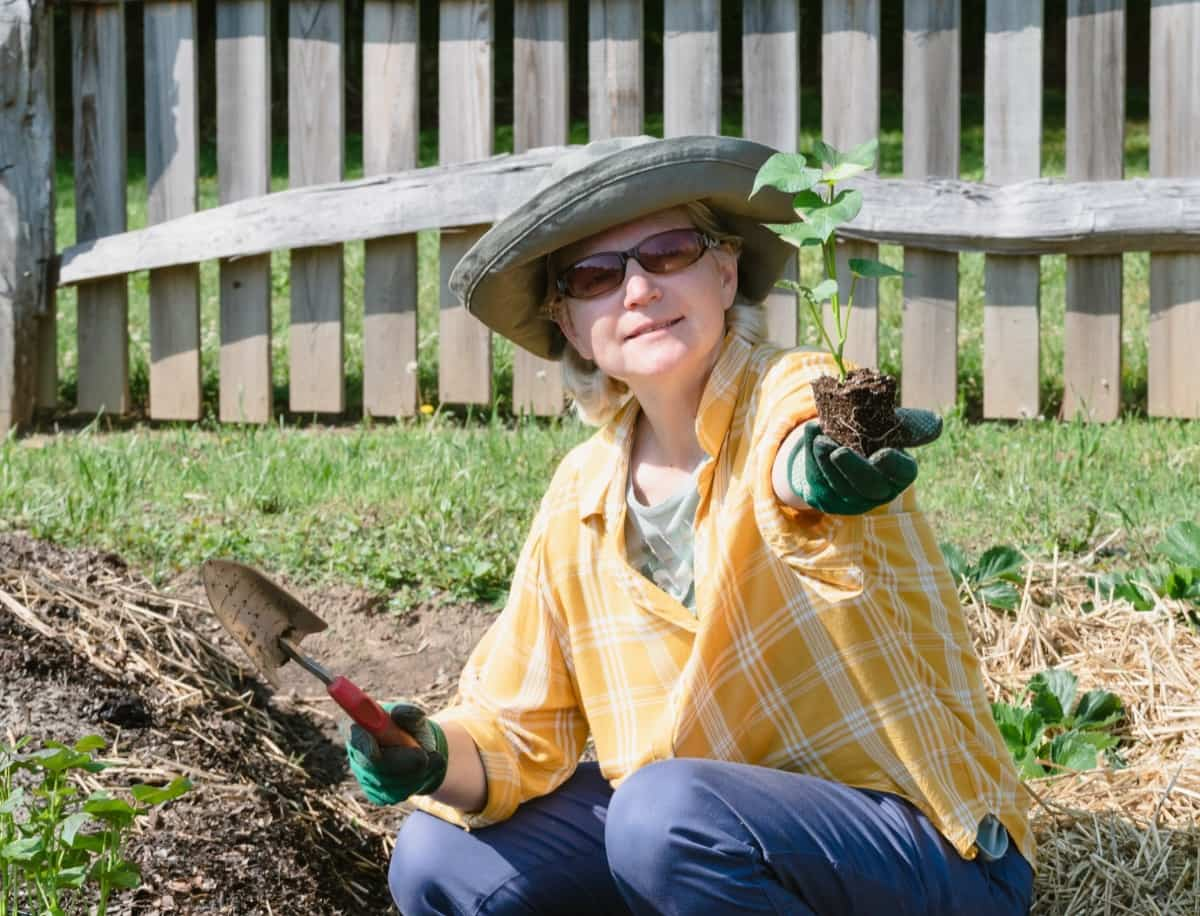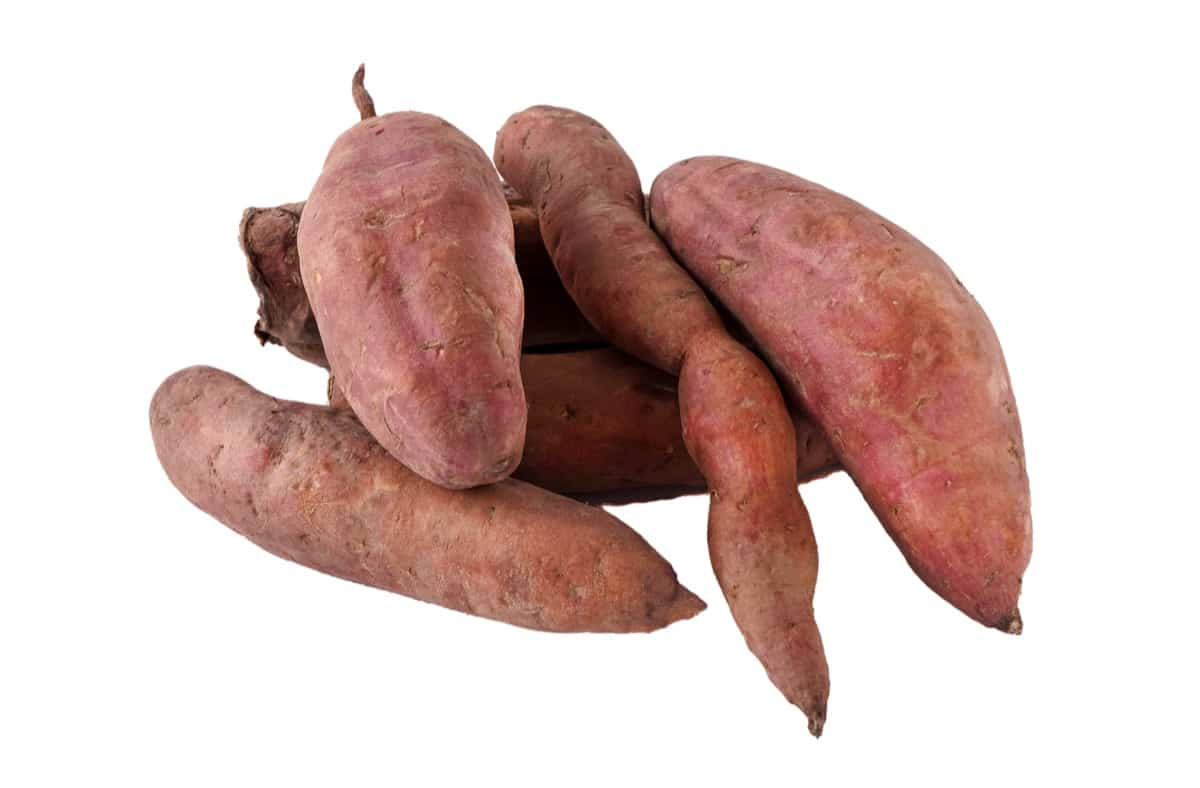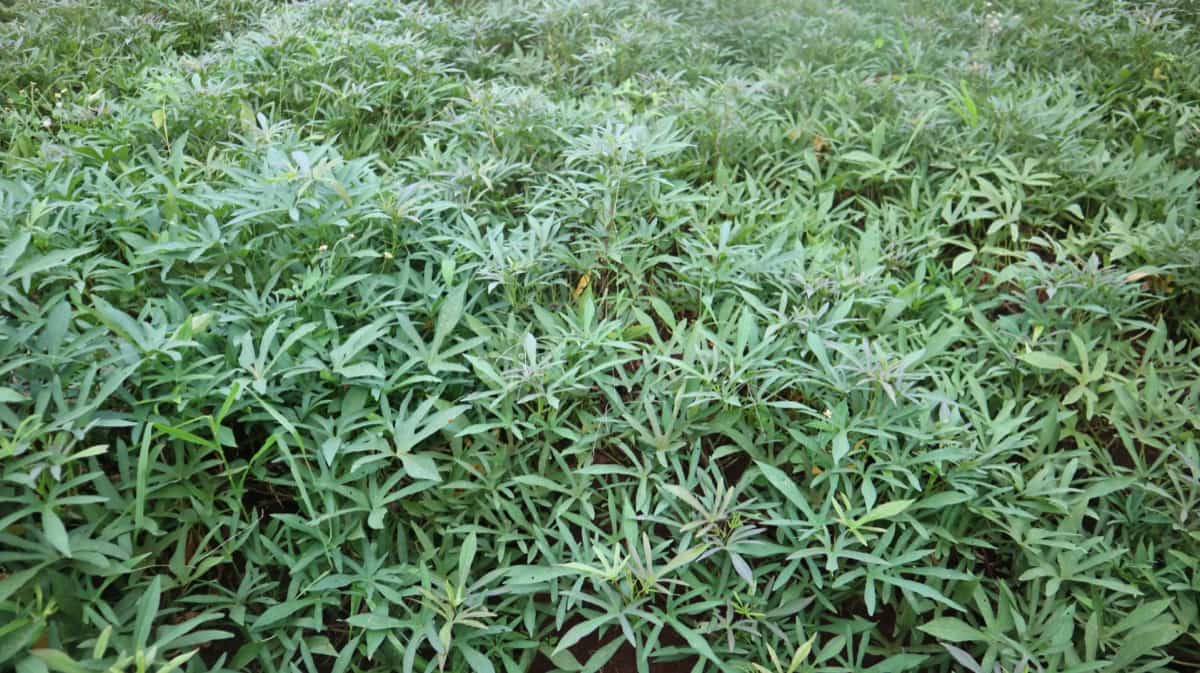Sweet Potatoes, known scientifically as Ipomoea batatas, are the root vegetable of the Morning Glory. Pest control is a crucial aspect of Sweet Potato cultivation. By applying pest control measures, you can protect your Sweet Potatoes and ensure a bountiful harvest. Organic treatments instead of harsh chemicals ensure these helpful creatures aren’t harmed while targeting destructive pests. Organic pest control for Sweet Potatoes is essential to maintaining a healthy and thriving crop. Common pests affecting Sweet Potato plants are;

- Sweet Potato Weevils: These small insects have a distinctive snout and can cause significant damage by tunneling into the roots and tubers of Sweet Potatoes.
- Wireworms: The larvae of click beetles, wireworms are slender, worm-like creatures that feed on plant roots, including those of Sweet Potatoes.
- Whiteflies: Tiny white insects with wings, whiteflies suck sap from the leaves of Sweet Potato plants, leading to stunted growth and yellowing foliage.
- Aphids: These pesky little insects reproduce rapidly and can quickly infest your Sweet Potato plants. They feed on sap and excrete honeydew, which attracts ants and promotes fungal growth.
- Slugs and Snails: These slimy creatures may not be insects, but they can still wreak havoc in your garden by devouring young shoots and leaves of your precious Sweet Potatoes.
Knowing how to identify Sweet Potato pests allows you to take proactive measures before they harm your crop significantly. By monitoring signs of Sweet Potato pests, such as chewed leaves or wilting vines, you can catch problems early on when interventions are more effective. Regularly inspecting your Sweet Potato plants will help you spot any unusual discoloration or distortion that could indicate a potential pest problem.
How to Control Sweet Potato Pests Naturally
Soil Management Strategies for Reducing Sweet Potato Pest Populations
Sweet Potatoes thrive in well-drained soil, so avoiding waterlogging is essential. Adding organic matter to the soil is also beneficial for pest control. Compost or well-rotted manure improves soil structure and fertility while attracting beneficial organisms like earthworms, which help break down organic matter and deter Sweet Potato pests. Regularly monitoring your garden for signs of pest activity is crucial to catching infestations early on. Identifying symptoms of Sweet Potato pests allows you to take immediate action before significant damage occurs.
Creating a Pest-Resistant Environment for Sweet Potatoes: Tips and Techniques
- Start with healthy soil: Good soil fertility promotes strong plant growth, making them less susceptible to pests. Enrich the soil with organic matter like well-rotted manure.
- Rotate crops: Avoid planting Sweet Potatoes in the same spot year after year, as this can increase pest populations. Practice crop rotation by alternating where you grow your Sweet Potatoes each season.
- Remove weeds regularly: Weeds provide hiding places for common Sweet Potato pests like cutworms and slugs. Regularly remove weeds from around your plants to reduce their presence.
Companion Planting for Natural Pest Control in Sweet Potato Gardens
The popular companion plant for Sweet Potatoes is marigold. These vibrant flowers add beauty to your garden and repel nematodes, common pests that attack the roots of Sweet Potato plants. The strong scent of marigolds helps mask the smell of the Sweet Potato plants, making them less attractive to these destructive pests.
In case you missed it: How to Control Broccoli Pests Naturally: How to Get Rid of Them with Natural and Organic Treatment

Another beneficial companion plant to control Sweet Potato pests naturally for Sweet Potatoes is basil. This aromatic herb repels aphids and other insect pests that may feed on the leaves of your precious tubers. Additionally, planting beans near Sweet Potatoes can help fix nitrogen in the soil, if nutrients for both crops, while deterring beetles and other leaf-eating insects.
Introducing Beneficial Insects to Combat Sweet Potato Pests
Ladybugs are one such beneficial insect that loves to feast on aphids and other soft-bodied pests that plague Sweet Potatoes. You can attract ladybugs by planting flowers like marigolds or daisies around your garden. These colorful blooms add beauty and provide nectar for hungry ladybugs. Parasitic wasps are tiny yet mighty warriors to get rid of Sweet Potato pests like cutworms and leaf miners. They lay their eggs inside these destructive insects, eliminating them from your garden ecosystem. Planting herbs like cilantro or dill will give you delicious seasonings and attract parasitic wasps.
Homemade Organic Sprays for Controlling Sweet Potato Pests
Garlic and chili pepper mixture – By blending fresh garlic cloves and spicy chili peppers with water, you create a mixture that repels pests like aphids, whiteflies, and spider mites. Spray this mixture regularly on your Sweet Potato plants, focusing on the undersides of plant leaves where pests often hide.
Neem oil spray – This is the best homemade treatment for Sweet Potato pests. It is a natural insecticide derived from the neem tree used to combat various pests. Neem oil disrupts insect growth cycles while acting as a repellent against insects like leafhoppers and beetles.
Baking soda spray – If you’re dealing with fungal diseases like powdery mildew or blight in your Sweet Potatoes, consider making a baking soda spray. Regularly spraying this solution on affected plants can help prevent further spread of disease.
Soap spray – A simple soap spray made by mixing mild liquid dish soap with water can effectively control Sweet Potato pests like aphids and mealybugs by suffocating them upon contact. Be sure to use non-toxic soap without additives or fragrances to avoid damaging your Sweet Potatoes.
Using Physical Barriers to Protect Sweet Potatoes from Pests
The main physical barrier to controlling Sweet Potato pests naturally is using row covers or insect netting. These lightweight fabrics allow sunlight, air, and moisture to reach the Sweet Potato plants while keeping pests out. Drape the fabric over the rows of Sweet Potatoes and secure it with stakes or clips. This will create a protective shield against insects like aphids, beetles, and caterpillars.
Another option is to build a fence around your Sweet Potato garden. A sturdy chicken wire fence can keep larger animals like rabbits, deer, or raccoons at bay. For smaller pests such as slugs or snails, consider placing copper strips around the base of each plant or using beer traps to lure them away from your Sweet Potatoes.
In case you missed it: How to Control Raspberry Pests Naturally: How to Get Rid of Them with Natural and Organic Treatment

Implementing Cultural Practices to Prevent Pest Infestations in Sweet Potatoes
Crop rotation is one of the important cultural practices to prevent pest infestations in Sweet Potato. Avoid planting Sweet Potatoes or other related crops, such as tomatoes or peppers, in the same area year after year. This helps prevent the buildup of specific pests that target these plants. Another method to control Sweet Potato pests naturally is proper spacing between plants. Give your Sweet Potato vines enough room to grow without overcrowding, as this can attract pests and create favorable conditions for disease development.
Maintaining good soil health is also essential. Healthy soil leads to healthy plants that can resist pest attacks. Ensure your soil has adequate nutrients and organic matter by regularly adding compost or well-rotted manure. Regularly inspecting your plants for signs of Sweet Potato pests or diseases is vital for early detection and prevention of infestations. Remove any affected foliage promptly and consider using sticky traps or pheromone traps to monitor insect populations.
Natural Predators of Sweet Potato Pests: Encouraging Wildlife in the Garden
Ladybugs are voracious eaters of aphids, a common pest that can damage Sweet Potato plants. By planting flowers such as Daisies or Marigolds near your crop, you can attract ladybugs and create a habitat for them to thrive. Birds play the main role in controlling insect populations. Set up birdhouses or install birdbaths nearby to attract birds to your Sweet Potato garden. Creating a diverse ecosystem with plenty of food sources and shelter options is essential to encourage beneficial wildlife in your garden.
Monitoring and Early Detection: Key Steps in Managing Sweet Potato Pests Naturally
Monitoring and early detection are crucial aspects of managing Sweet Potato pests naturally. Look for Sweet Potato pest signs such as leaf damage, wilting, discoloration, or unusual growth patterns. The main method is handpicking pests off the plants. This involves physically removing insects like aphids or caterpillars from the leaves by hand.
Another approach uses sticky traps to catch flying insects like whiteflies or fungus gnats. By monitoring your Sweet Potato crops closely throughout their lifecycle, you have a better chance of identifying Sweet Potato pests before they become severe infestations. This proactive approach helps minimize plant damage while reducing reliance on chemical pesticides.
Control Sweet Potato Pests Naturally
| Pests | Symptoms | Identification | Control |
| Sweet Potato Weevils | Tunneling into roots & tubers | Small insects with distinctive snouts | Handpicking infected parts, using beneficial nematodes, and applying neem oil to the plants. |
| Wireworms | Root feeding | Slender worm-like creatures | Crop rotation; beneficial nematodes |
| Whiteflies | Stunted growth & yellowing foliage | Tiny white insects with wings | Natural predators like ladybugs, neem oil spray |
| Aphids | Feed on sap; honeydew excretion | Rapid reproduction | Spray soapy water |
| Slugs & Snails | Feed on young shoots & leaves | Slimy creatures | Manual removal by handpicking |
In case you missed it: How to Control Blueberry Pests Naturally: How to Get Rid of Them with Natural and Organic Treatment

Conclusion
Pests such as aphids, whiteflies, and nematodes can damage the Sweet Potato plant leaves, roots, and tubers, leading to reduced growth and lower yields. Implementing natural pest control for Sweet Potato will help keep these destructive insects at bay. Controlling Sweet Potato pests naturally offers numerous benefits for plants and the environment.
By opting for natural methods, you avoid using harmful chemicals that can potentially damage your crops and contaminate the soil. This approach promotes a healthier ecosystem in your garden by preserving beneficial insects, birds, and other wildlife.
- Beneficial Insects in Pest Management
- Natural Solutions for Pest Control in Flower Gardens
- Types of Fungicides Used in Agriculture
- Common Issues in the Fruit Development Stage of Pomegranate Farming
- Fruit Development Issues in Papaya: Easy Solutions and Treatment
- Soil-Borne Diseases and How to Protect Your Plants
- Practices to Prevent Disease Spread in the Garden
- From Wilted to Thriving: How to Treat Root Rot Naturally in Houseplants
- Natural Remedies to Cure Brown Spots on Fig Tree Leaves